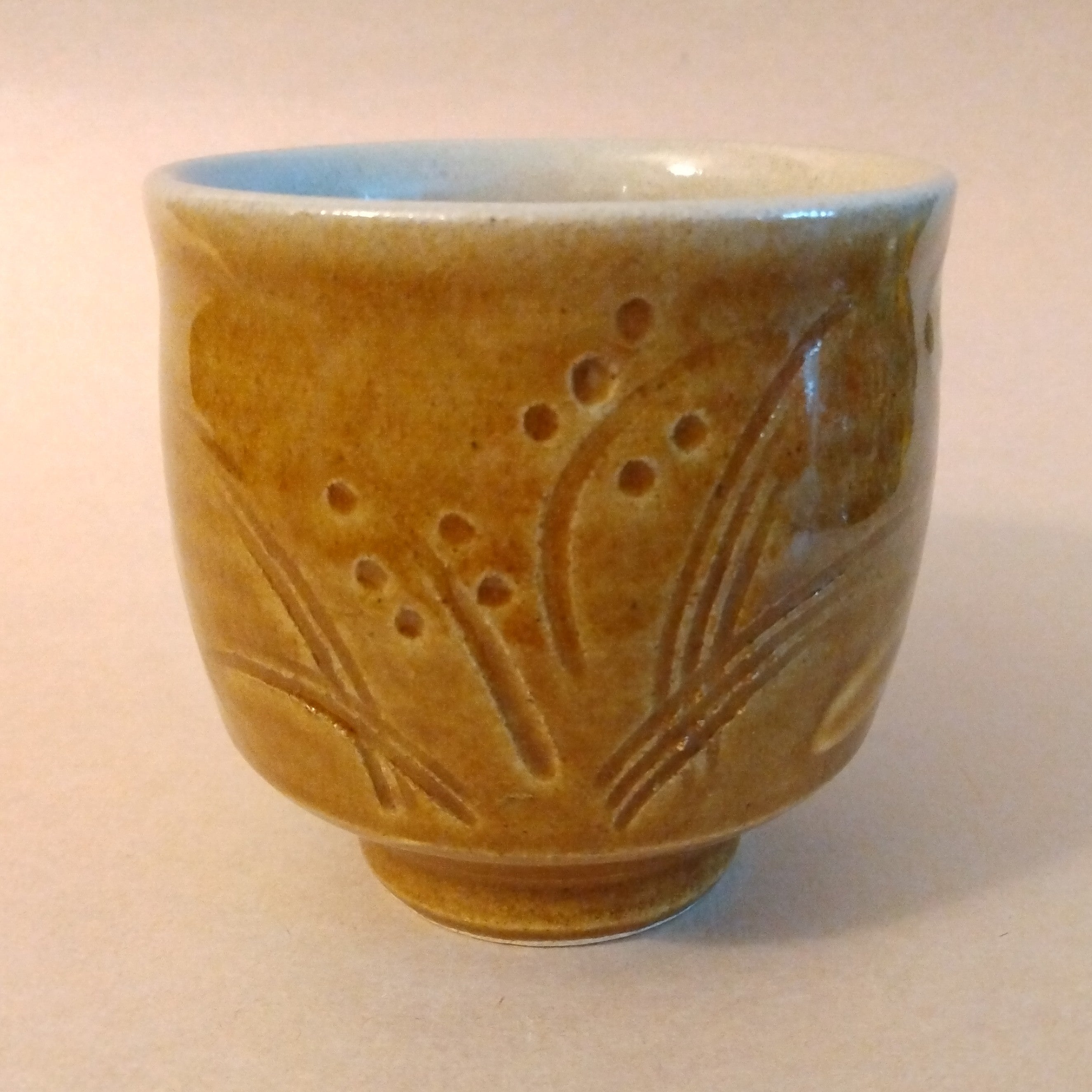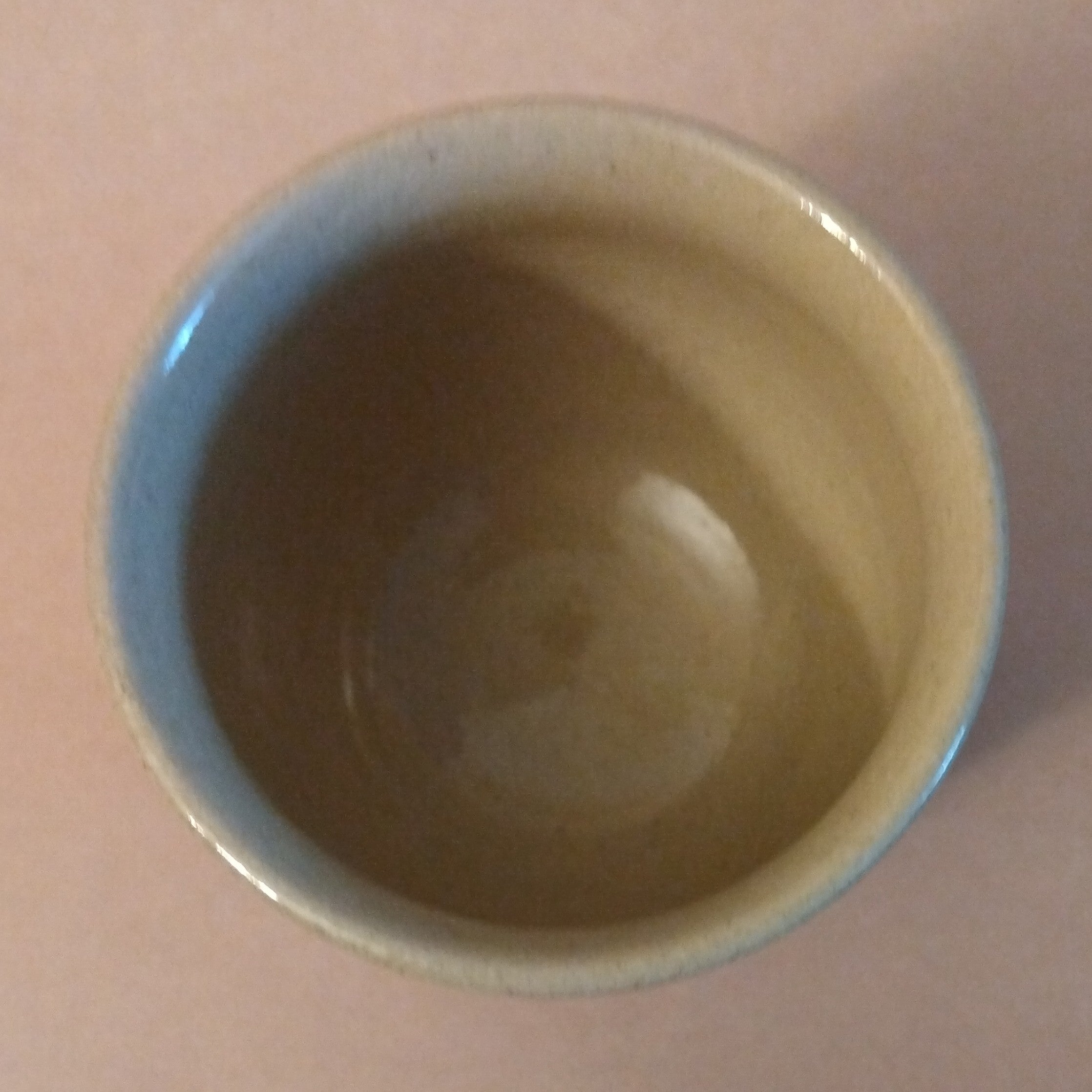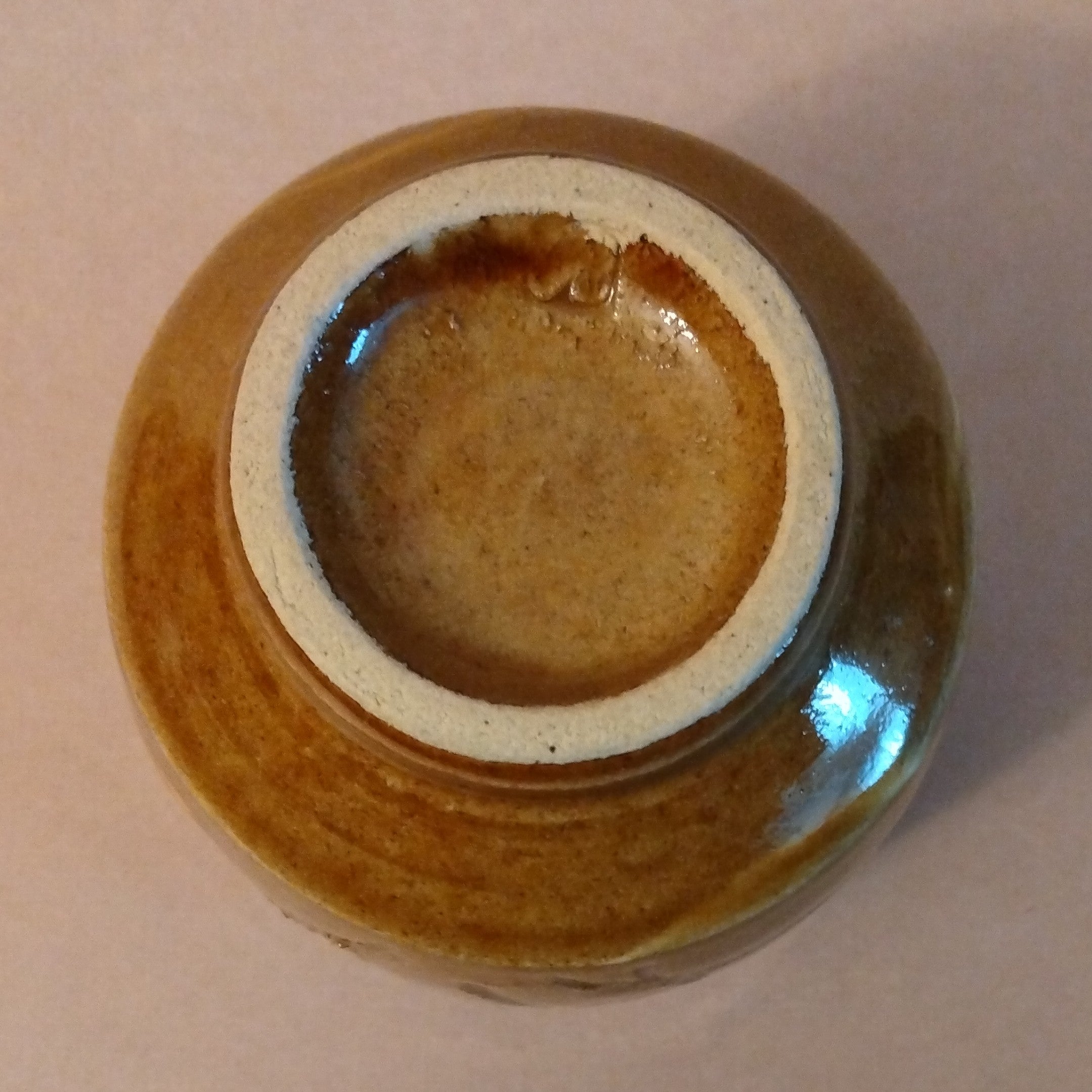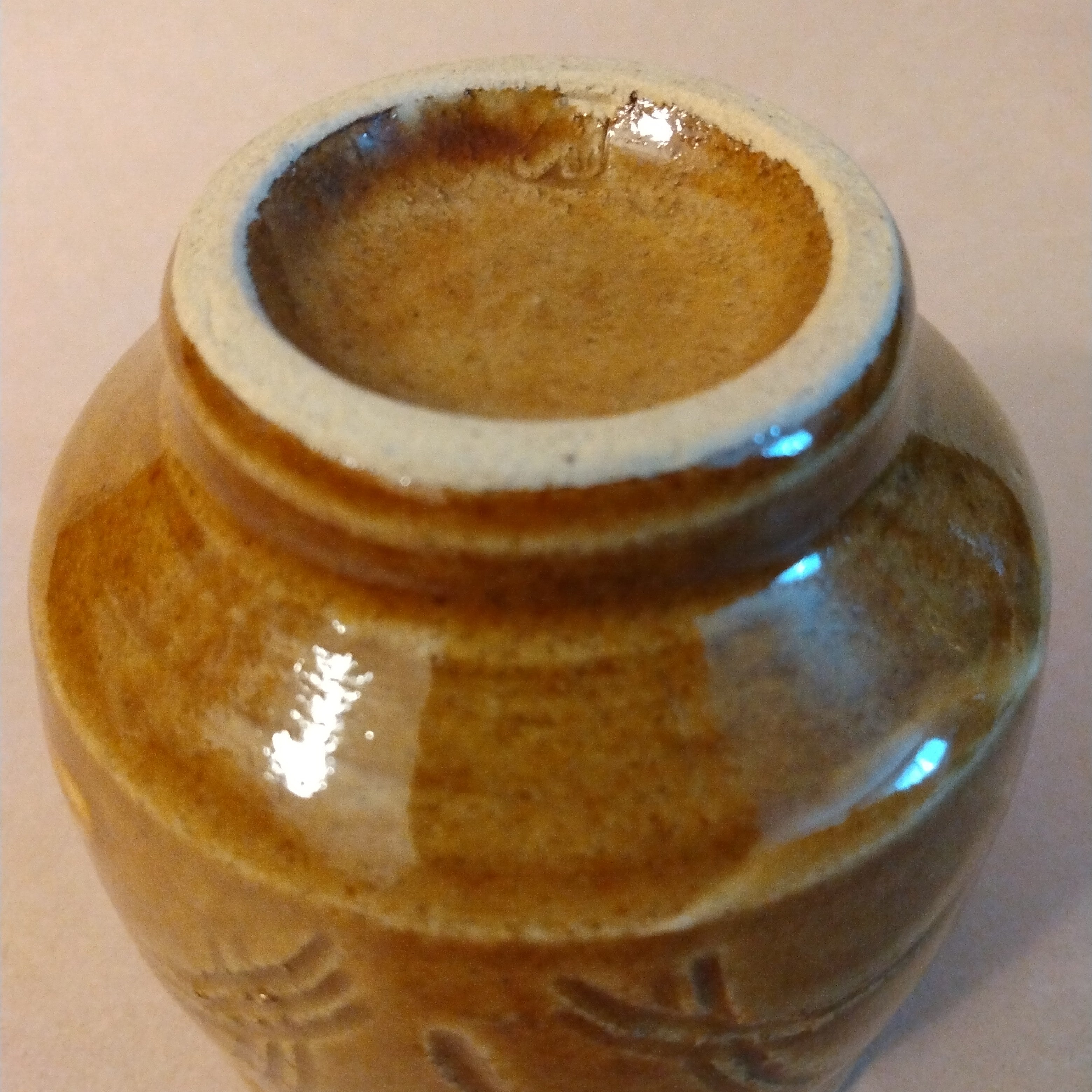Description
Yunomi, Tea Cup, by Akashi Shosaku, Mashiko. Vintage, ca 1990. Namijiro (white) interior with Ame-yu (a butterscotch-colored glaze) exterior. Carved flowers and leaves decorate the front of the cup, while thick brushstrokes of white slip (under the Ame glaze) adorn the back and sides. H. 3.25"(8.25cm) x Dia. 3.25"(8.25cm). Weight 227 grams. Volume 220ml (7.25oz). This glaze is as lustrous as a caramel apple, and was a glaze often used in traditional Mashiko ware. A delight to hold, and to use.
Akashi Shosaku was born in Mashiko, Tochigi Prefecture, in 1942. He is widely recognized as the last apprentice of Hamada Shoji. In 1962 he began a long relationship with Hamada Shoji (1894-1978) and the Hamada Kiln as an apprentice (deshi) and artisan worker (shokunin) that lasted nearly 20 years. He did join in exhibitions during his tenure at the Hamada Kiln, but opened his own independent kiln 1981. Since that time, he has won numerous awards locally in Tochigi Prefecture, and nationally with various Japanese ceramic and art associations. His work has been widely collected in Japan and around the world. He has his own style, but continues the work of preserving the techniques of Hamada Shoji and the aesthetics of local Mashiko ware.
The town of Mashiko is located about 70 miles northwest of Tokyo, in Tochigi Prefecture. Although there is evidence of pottery manufacture in the region of Mashiko as far back as the 8th century; production in the modern age began in 1853, making it a relatively young pottery center by Japanese standards. However, whereas many traditional pottery towns disappeared when Japanese lifestyle changes made many functional clay items obsolete, Mashiko has survived and thrived as one of the largest pottery communities in the world. Much of this can be credited to life and work of Shoji Hamada, who decided to settle in this traditional clay village. Although he was a contemporary artist, he showed great respect for the work of traditional artisans, for the natural materials available from the region, and for the "Other Power" of tradition. He was a leading figure in the Japanese Folk Craft Movement, along with Soetsu Yanagi and others; such as potters Bernard Leach and Kanjiro Kawai, textile artist Keisuke Serizawa, and woodblock printer Shiko Munakata. Hamada was designated as a National Living Treasure for his preservation of Mingei (Folk Craftâ) pottery and promoted an openness which led many to follow his path to Mashiko. In the early 2000's, there are some 400 kilns operating in and around Mashiko making a wide variety of wares; from traditional styles and patterns to modern artistic works.





